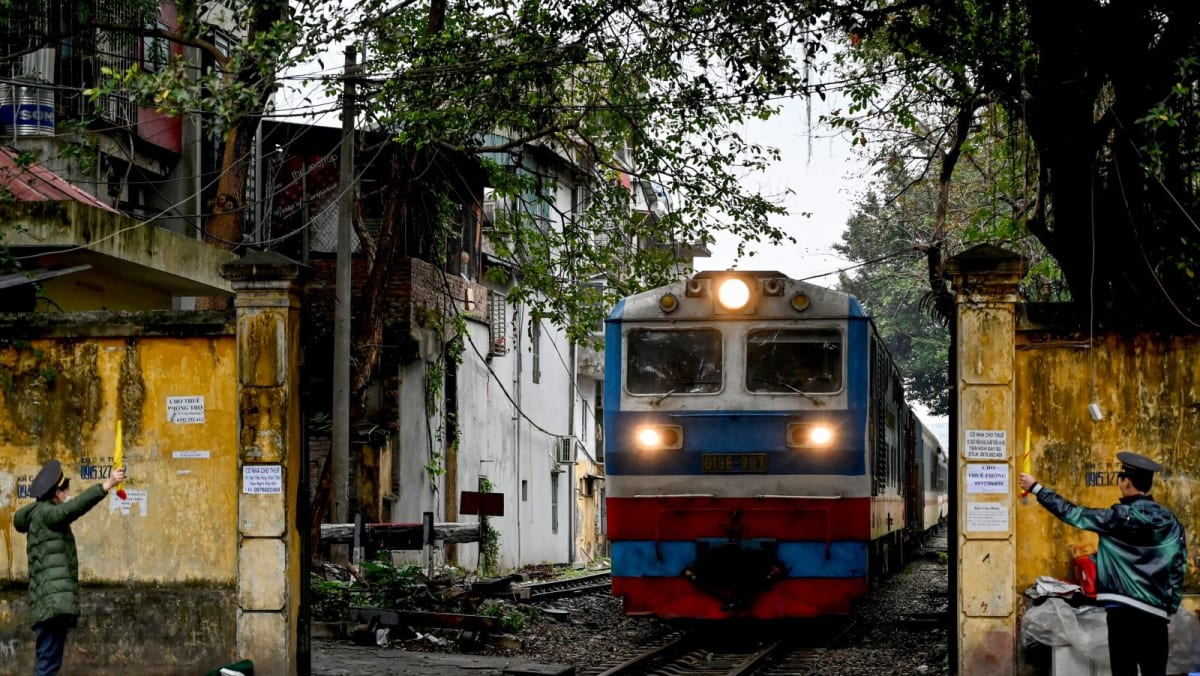Asia
Vietnam parliament approves US$8 billion rail link to China

Vietnam Approves $8 Billion Rail Link to Strengthen Ties with China and Boost Trade
Strategic Railway Project Approved
In a significant move to enhance its economic ties with China and improve its transportation infrastructure, Vietnam’s National Assembly approved an $8 billion rail link project on February 19. The project involves constructing a 390-kilometer railway connecting the northern port city of Haiphong to Lao Cai, a mountainous city bordering China’s Yunnan province. This railway will also pass through the capital city of Hanoi, making it a vital transportation artery for the region. The approval, supported by 95% of parliamentarians, underscores Vietnam’s commitment to strengthening its infrastructure and deepening its relationship with its northern neighbor.
The railway is part of Vietnam’s broader "Two Corridors, One Belt" initiative, which aligns with China’s Belt and Road Initiative (BRI), a massive global infrastructure development program. This collaboration is expected to enhance trade between the two countries and facilitate the movement of goods, raw materials, and finished products. The project also reflects Vietnam’s efforts to modernize its transportation network, which has been a bottleneck for its rapidly growing economy.
Enhancing Trade and Manufacturing Links
The new rail link will traverse several key manufacturing hubs in Vietnam, home to global giants such as Samsung, Foxconn, and Pegatron. These companies rely heavily on a steady supply of components from China, and the railway will provide a faster and more reliable alternative to the current reliance on road transport. The rail line will also connect to Haiphong, one of Vietnam’s largest ports, creating a seamless logistics chain from China to Vietnam’s factories and onward to global markets.
This project is particularly significant given Vietnam’s emergence as a favored destination for foreign businesses looking to diversify their supply chains away from China. However, the country’s underdeveloped infrastructure has been a hindrance to attracting more investment. The new railway is expected to address this issue by improving the flow of goods and reducing transportation costs and delays.
Strengthening Infrastructure for Economic Growth
Vietnam’s transport infrastructure is currently under strain, with a road network that is struggling to keep up with growing demand and a rail system that is far from modern. The new railway will not only alleviate some of the pressure on the existing infrastructure but also provide a more efficient and sustainable transportation option. The project is expected to cost over $8 billion, with China providing some funding through loans. Construction is set to begin soon, with the goal of completing the railway in the coming years.
The railway will also have a positive impact on Vietnam’s manufacturing sector, which is increasingly reliant on imported raw materials from China. By providing a faster and more reliable means of transporting these materials, the railway will help maintain the smooth operation of Vietnam’s factories and ensure that the country remains a competitive destination for foreign investment.
Economic Implications for Vietnam and the Region
The approval of the railway project comes at a time when Vietnam is seeking to deepen its economic ties with China while also balancing its relationships with other major powers, such as the United States. The project reflects the growing importance of the Vietnam-China economic partnership, which has been a key driver of Vietnam’s rapid economic growth in recent years.
Dan Martin, an international business adviser at Dezan Shira & Associates, highlighted the potential benefits of the railway for Vietnam’s manufacturing sector. "China supplies much of the raw material that fuels Vietnam’s manufacturing sector, and keeping that pipeline steady is critical," he noted. The railway will help reduce the reliance on slow and costly road transport, which is prone to border bottlenecks. By providing a more efficient transportation option, the railway will help smooth out inefficiencies in international supply chains, ensuring that goods can move smoothly into Vietnam’s factories and onto global markets via Haiphong’s port.
Geopolitical Significance of the Railway
The approval of the railway project also has significant geopolitical implications. It comes just over a year after Chinese President Xi Jinping’s visit to Vietnam, during which the two countries pledged to deepen their ties. The project is part of China’s broader efforts to strengthen its economic and political influence in Southeast Asia, particularly as the United States seeks to counterbalance Beijing’s growing power in the region.
Vietnam’s decision to proceed with the railway project reflects its strategic balancing act between its two major partners. While the country is keen to strengthen its economic ties with China, it is also careful to maintain a diverse range of international relationships to avoid over-reliance on any single partner. The railway project is a testament to the growing importance of Vietnam-China economic cooperation and the role of infrastructure in shaping the region’s future.
Conclusion: A Bright Future for Vietnam’s Economy
The approval of the $8 billion rail link between Haiphong and Lao Cai is a landmark moment for Vietnam’s economic development. The project not only strengthens the country’s transportation infrastructure but also deepens its economic ties with China, paving the way for increased trade and investment. By addressing the current inefficiencies in the supply chain, the railway will help Vietnam maintain its competitive edge in the global manufacturing sector and attract more foreign investment.
As the project moves forward, Vietnam will need to ensure that the benefits of the railway are shared widely and that the environmental and social impacts of the construction are carefully managed. However, there is no doubt that the railway has the potential to be a game-changer for Vietnam’s economy, enabling the country to achieve its ambitious growth targets and solidify its position as a key player in the region’s economic landscape.











